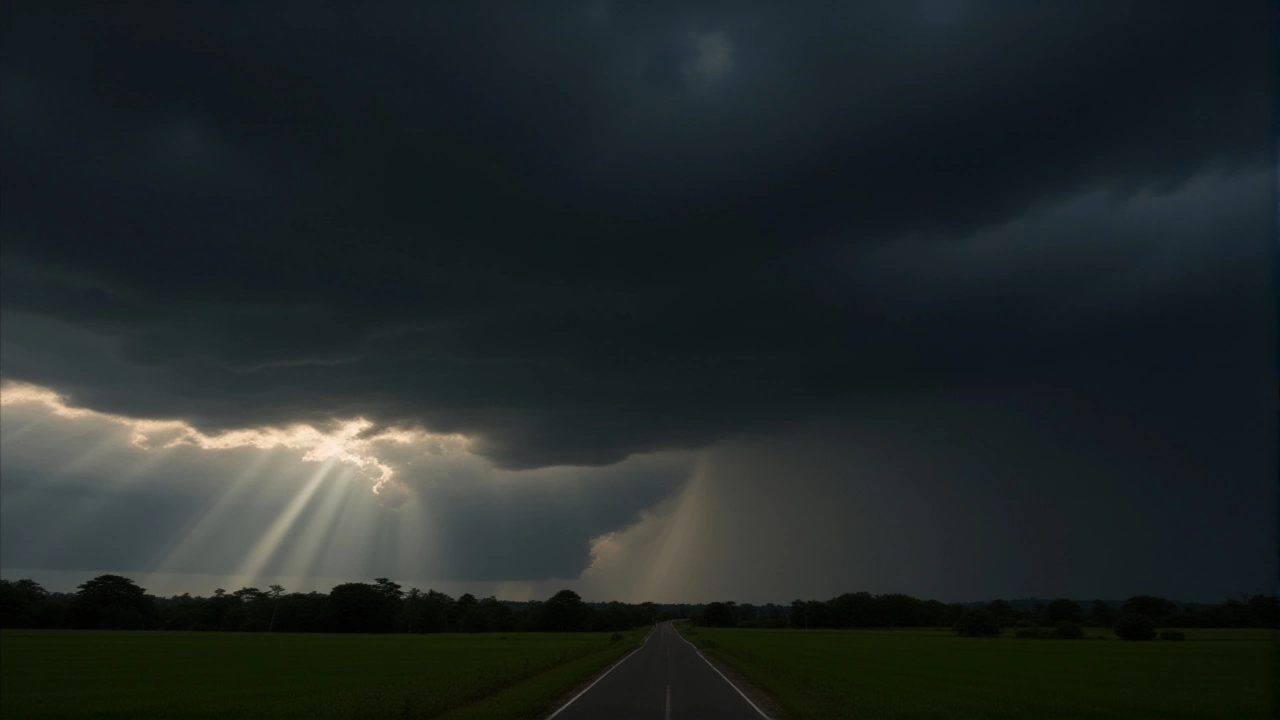Thunder and Lightning: What Causes Them and Why They Matter
When you hear thunder and lightning, a natural electrical discharge caused by imbalances in storm clouds. Also known as atmospheric discharge, it's one of the most visible signs of a powerful weather system at work. It’s not just drama—it’s physics. Lightning happens when positive and negative charges build up inside a storm cloud until the air can’t hold them anymore. The flash you see is the charge zapping through the air, heating it to 50,000 degrees Fahrenheit in a fraction of a second. That sudden explosion of heat is what creates thunder, the sound wave produced by the rapid expansion of air around a lightning bolt. You see lightning before you hear thunder because light travels way faster than sound. Count the seconds between the flash and the boom—every five seconds equals about one mile away.
These aren’t random events. In India, they often show up with western disturbance, a non-monsoon weather system that brings rain and storms to northern India. When this system hits, especially in places like Delhi-NCR, Bihar, or Uttar Pradesh, it doesn’t just bring drizzle. It triggers violent storms with heavy rain, hail, and yes—lots of lightning. The India Meteorological Department, the official agency responsible for monitoring and forecasting weather across India. issues alerts when these systems peak, warning people about flooding, downed power lines, and dangerous conditions. You’ve probably seen those headlines: "IMD warns of heavy rainfall," or "Lightning kills 12 in UP." These aren’t isolated incidents. They’re part of a pattern tied to how our atmosphere behaves during seasonal shifts.
People often think thunder and lightning are just part of the monsoon, but they show up outside rainy seasons too. A strong western disturbance in October can dump rain and lightning on the Himalayas just as easily as it does in May. And it’s not just about danger—it’s about timing. Farmers watch for these storms because they can recharge groundwater. Cities need them to cool down during heatwaves. But when they hit without warning, they’re deadly. In 2023, over 2,500 people in India died from lightning strikes—more than any other natural disaster that year. That’s not luck. That’s a lack of awareness and early warning.
What you’ll find in the posts below are real stories where thunder and lightning made headlines—not as poetry, but as events that disrupted lives, changed plans, and forced people to react. From IMD warnings in Delhi to storm-related delays in cricket matches and power outages in rural towns, these aren’t abstract weather terms. They’re daily realities for millions. And if you’ve ever wondered why a sudden storm shuts down a city or cancels a game, the answers are right here.
Shimla Braces for Thunderstorms: Yellow Alert Issued as Autumn Weather Shifts
Shimla faces a yellow alert for thunderstorms starting October 9, 2025, as the India Meteorological Department warns of dangerous electrical activity during what's typically a calm autumn season. Visitors and residents must prepare for sudden storms.
